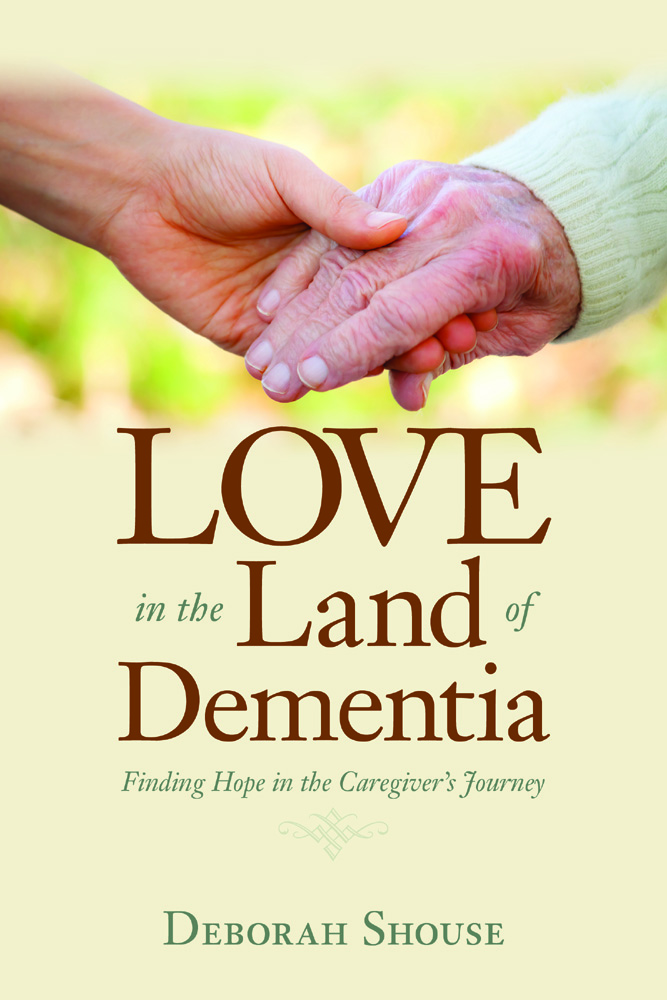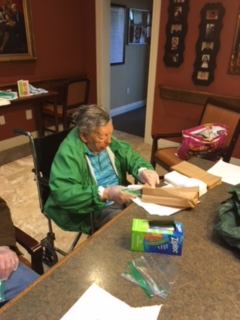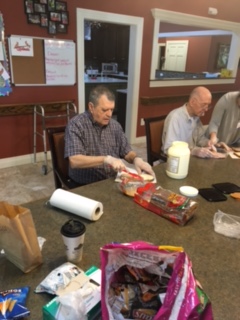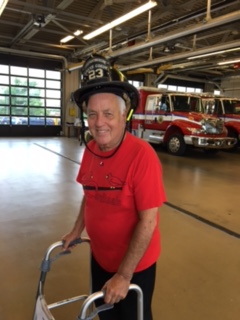Posts Tagged ‘giving back’
Santa Takes a Stand
I saw the red outfit and overgrown white beard even before I heard the bell ringing. I reached into my pocket to dig out a few coins. This Sunday Santa looked surprisingly like a Norman Rockwell version. Then I noticed there was a glint rather than a twinkle in his blue eyes.
“I’m asking you to give back,” the man in red said:
“Excuse me?”
“I’m asking you to give back!” His voice was deep, but I didn’t hear the old jolliness.
He handed me a piece of paper with the heading: Capital Campaign, The Season for Giving, S. Claus and Associates. “Have you received good service from our outfit over the years?”
“Well, yes, I have,” I said, remembering the red bicycle that had magically appeared when I was seven.
“And do you feel like we have met and exceeded your expectations?”
“Yes, I do.” I rubbed my hands together. The wind was sharp and my fingers felt frozen.
“I really need to get going,” I said.
Santa touched my arm. “We need your help. How would you feel if you’d been working night and day for others, trying to make wishes and dreams come true, creating astonishing presents and delivering them. How would you feel if all you ever received back was the occasional cookie and milk. I have had enough. I am asking you to give back.”
I looked at Santa carefully and wondered if whoever hired him knew he was over the edge. I breathed in, but detected no odor of alcohol. His pupils were not dilated; his hands not frenetic. He didn’t look like he was on some mind-altering substance.
I reached into my wallet for a dollar or two.
“No,” he said, pushing away the money. “I want you to truly give. Not just a spare couple of bucks. I want you to understand and appreciate what I’m doing.”
Part of my brain was sternly reminding me this was an ordinary man dressed in a fluffy red suit. Then, a wave of compassion pushed through me. Here was a great mythological hero asking for help!
Santa’s legs seemed to buckle and he sagged as though he were about to fall. I took his arm and led him into a nearby fast food place, where I bought him coffee and fries and a big burger with everything. As he ate, I pulled out my cell phone.
“I’m going to be a few minutes late,” I told my shop manager.
“That’s just one of the things we need,” Santa said mournfully, as I finished my call.
“What?”
“Cell phones. Can you imagine dropping down all those chimneys without calling ahead first and making sure there’s no chestnuts roasting?”
I pictured Santa, sitting in his reindeer-driven sleigh, dialing direct and collect. I wondered how many would take the call.
“Santa, people expect to receive from you. That’s what we love about you. All we have to do is act reasonable for a year, and we get wonderful gifts.”
“Things change,” Santa said. “We’ve existed for years on nothing but goodwill and good cheer. But the supply is running low. I’m thinking we should forget the old fashioned approach and embrace the age of technology.”
My throat tightened. I imagined Santa, logging in on line, charging up presents on his gold credit card, filling out W-2’s on the elves and writing up reports for OSHA and the SPCA about the reindeer. I imagined a virtual holiday, where presents simply appeared as part of an email attachment, recipients unspecified.
“What can I do?” I asked. “Do you have a list of what you want? We always give you a list to work from.”
“I hadn’t thought of that! Of course! Can I borrow a crayon and paper?”
I handed Santa a pen and a page from my note pad. As he wrote, I stared out the window, watching shoppers rush past. Most of them looked anxious and overwhelmed. They would be even more anxious if they knew Santa was considering taking a Christmas off!
Santa smiled as he handed back my pen and said,
“Now, I want to sit in your lap and read you my list.”
“What!”
Before I could refuse, Santa had settled at least half of himself on my lap.
“So what would you like for Christmas?” I said, in my deepest, merriest voice.
- “A cell phone, with unlimited long distance.
- A new transportation system. Something that doesn’t leave hoof prints.
- Productivity training for the elves.
- Sensitivity training for the reindeer.
- A new suit, something with pockets.
- A new corporate headquarters — in a more temperate climate.
Santa bounced up and down as he recited his list. Each bounce made my legs twinge. Each word made my heart cringe. If Santa traded his charm, and his bumbling good will for high tech efficiency, the whole spirit of the holiday season would be radically changed.
“Now what?” I asked, when Santa had finished his list..
“Now that you’ve paid some attention to me, I feel better.” Santa stood up. He fluffed his beard, brushed a few crumbs off his belly, and said, “Ho Ho, I feel richer already. Please spread the word about giving back.”
I raced to work, feeling great. I had just given to one of the world’s champion givers. As I walked down the crowded street, I looked carefully at each rushing person, wondering who else was in need of a little good cheer.
Deborah Shouse is the author of Connecting in the Land of Dementia: Creative Activities to Explore Together and Love in the Land of Dementia: Finding Hope in the Caregiver’s Journey.
Dementia Journey: Planting Seeds and Growing Engagement
I met so many inspiring people when I was writing Connecting in the Land of Dementia. Activities director Lori Condict, from Chestnut Glen Assisted Living by Americare in St. Peters, Missouri, created an inspiring program focused on planting seeds and growing engagement. Whether you’re a family care partner or you work in a facility, you’ll learn from Lori’s project.
Planting Seeds and Growing Engagement
“Mable, I could use your assistance this morning,” Lori Condict says. “The tomatoes are ripe and I need help picking them. Are you available?”
Mable nods. Lori waits while Mable puts on her gardening hat and gloves. Then they join others from the memory care community outside in the garden.
“What are you thinking about Mable?” Lori asks, handing her a small bucket.
“My first bite of summer tomato.”
“Let’s try one of these,” Lori says. She knows that Mable and her husband used to have a vast vegetable and flower plot.
Mable plucks a cherry tomato off the vine and pops it into her mouth. Slowly, she picks another and plops it in her bucket. Others in her community are also harvesting the tomatoes.
“We’ll be sharing our vegetables with the food bank, so others less fortunate will enjoy this fresh produce, “Lori reminds her.
“That’s good,” Mable says. “Everyone needs to taste these tomatoes.”
Mable lives in the memory care unit in Chestnut Glen Assisted Living by Americare in St. Peters, Missouri. She is one of the 15 residents working on the Operation Riverfront gardening project. Lori, the activities director in the care facility, is a city girl. But she knew she’d have plenty of help from her residents. She also knew that they would thrive knowing they had a purpose and were giving back to their community.
Seeding Empowerment
Lori started simply, with a bunch of tomato, cucumber, squash, peppers, and pea seeds, pretty and colorful vegetables that would remind residents of their home gardens. Lori had tasks for all abilities: some held little containers while another filled them with dirt; some tamped in the seeds and others labeled them. Lori provided everyone with special hats and gloves.
While they worked, they reminisced, talking about favorite tomato dishes and summertime activities.
Sharing the Bounty
When it was time to share with the local food pantry, the residents did the harvesting and packing.
“We had planters, pickers, packers, counters, and a watering crew,” Lori says. “People who’d been depressed and disengaged got involved. Through working on the project, they felt alive and useful; they had a purpose.”
Want to grow plants, connections, and a sense of purpose? Here are some tips:
- Select flowers, plants, vegetables, and herbs that are pretty, colorful, easy to grow, and have some meaning to the person living with dementia.
- Create small tasks that are interesting and pleasurable.
- To increase the sense of purpose, find ways to share blooms, cuttings, vegetables, and herbs with family, friends, and community members.
- For those who can’t go outdoors, bring the plants to them in containers.
- Infuse the work with opportunities for conversation.
Deborah Shouse is the author of Connecting in the Land of Dementia: Creative Activities to Explore Together and Love in the Land of Dementia: Finding Hope in the Caregiver’s Journey.
Get Cooking on Giving Back
The assembly line stretched around the spacious dining room table and each person focused fully on his task. One man spread mayonnaise on bread. Another placed turkey slices and another added cheese. Another slipped the sandwich into a baggie and others assembled the lunches, adding potato chips and a cookie. All worked diligently; there was a special purpose to this meeting of the Men’s Club at Dolan Memory Care Homes in Creve Coeur, Missouri. They were giving these homemade meals to the fire fighters in their community as a way of showing their appreciation.
Ten residents of varying abilities, including all levels of memory impairment, contributed to the sandwich brigade. Those who needed help had an assistant with them.
“The participating residents were filled with high energy and good spirits,” says Mary Kate Halm, LMSW, Admissions Coordinator of Dolan, who organized the activity. “They were excited to be engaged.”
The local fire department had invited the group to tour the station when they delivered the lunches. The experience included opening up the sides of the fire truck. One of the residents, who was usually indifferent to outings, used to be a tool designer. When he saw the tools in the fire truck, his eyes grew wide and he became very animated.
“Everyone enjoyed being engaged in a purposeful activity. They loved the tour and they asked excellent questions,” Mary Kate says. They wanted to know the details of their training, how much each truck cost, how much their equipment weighed, and more. The residents weren’t the only ones engaged.
“The firemen loved the attention,” Mary Kate says. “Plus, they were patient, communicated clearly, and were considerate of those in walkers and wheelchairs.”
The community volunteer activity generated a lot of joy and curiosity.
“They were completely connected to the experience,” Mary Kate says. “They were learning, they were giving back, and they were fully present. We created a moment of joy and that’s all that matters.”
Get ready to give back:
Mary Kate offers these tips for connecting with the community and giving back.
- Look for a service organization that you admire. This can be emergency responders such as fire fighters, police, sheriffs, EMTs, as well as animal rescue teams, cancer support organizations, and more.
- Find a project that’s fun for you and for the person living with dementia, a project you can both participate in. If you have friends and family who’d like to help, this is a great time to get others involved.
- Coordinate with the organization and find a time to deliver your gifts. If it’s of interest, ask for a chance to learn more about the organization.
For more interesting activity ideas, visit https://t.e2ma.net/message/gxreo/4bbql
Three Reasons to Give Life Meaning by Giving Back
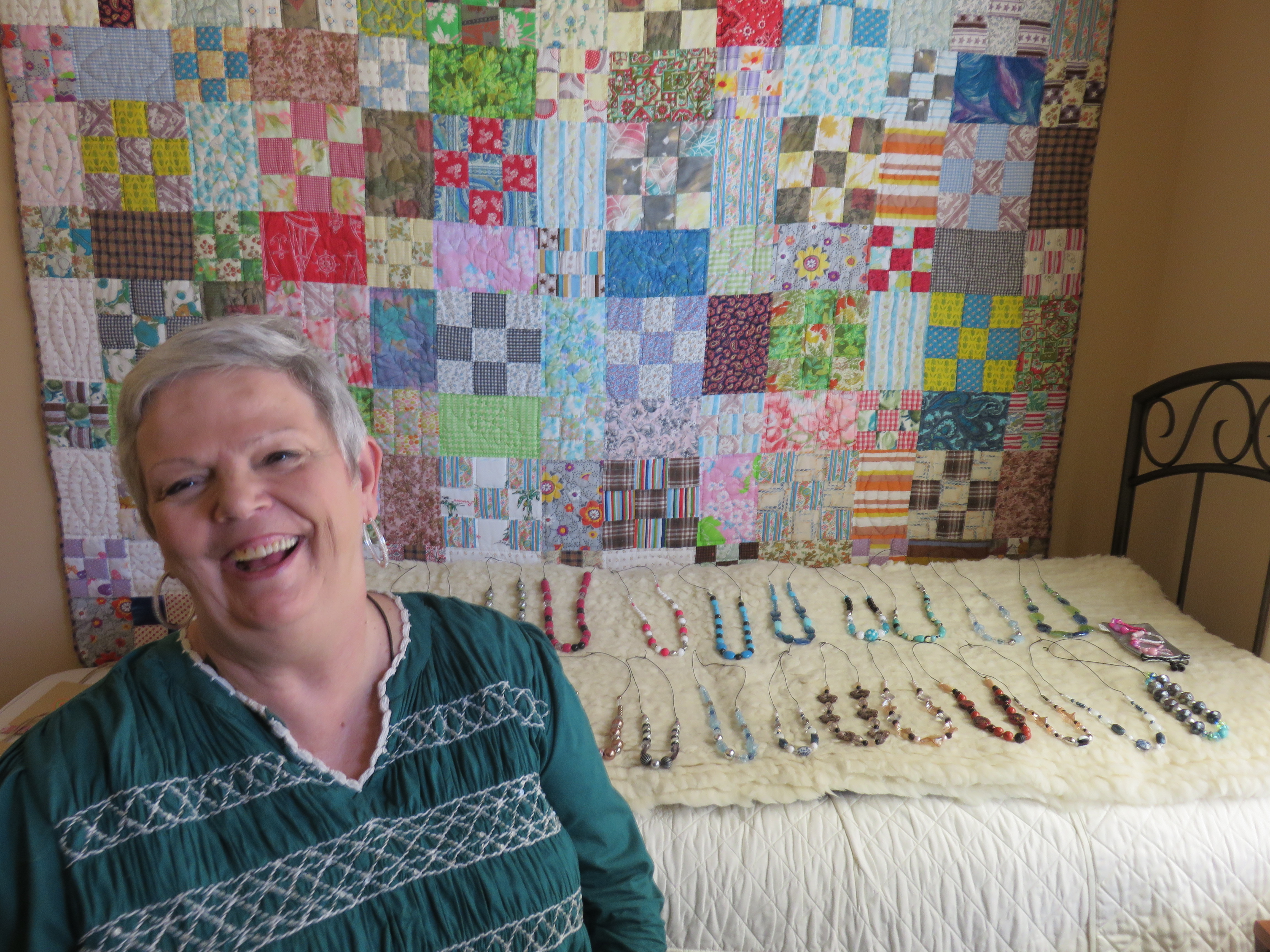 Even when she was traveling the globe, designing and creating family-oriented projects, such as children’s museums, farms and gardens, Vicki Stoecklin made time to volunteer. She’d work on projects in Thailand, Saudi Arabia, and China, but whenever she was home in Kansas City, Missouri, Vicki shared her time and talents with non-profit organizations including the Girl Scouts, the local food bank, a boy’s home and more.
Even when she was traveling the globe, designing and creating family-oriented projects, such as children’s museums, farms and gardens, Vicki Stoecklin made time to volunteer. She’d work on projects in Thailand, Saudi Arabia, and China, but whenever she was home in Kansas City, Missouri, Vicki shared her time and talents with non-profit organizations including the Girl Scouts, the local food bank, a boy’s home and more.
When Vicki was diagnosed with early-onset Alzheimer’s, her life radically changed; she had to give up her dynamic travel schedule and her demanding and rewarding career. But she never considered giving up her volunteer activities; in fact, she consciously began seeking more opportunities to give back to her community.
Many of her normal activities were no longer viable: she couldn’t drive, read or cook. Her normally stellar math skills were impaired. Suddenly, instead of having to make every minute count, she had nothing but time. Within these limitations, she had to reframe her life and find new activities that stimulated and engaged her.
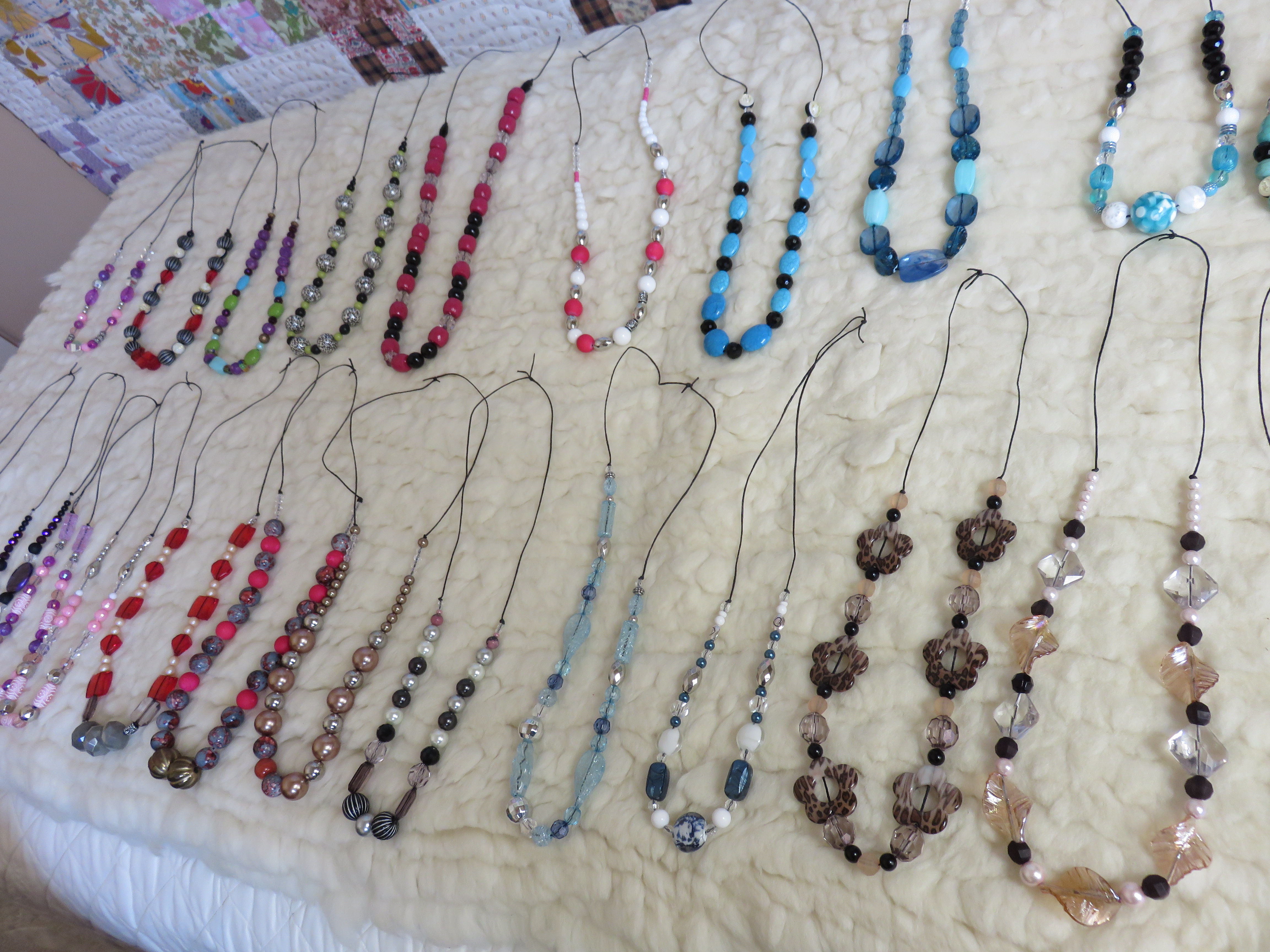 As Vicki pondered what to do with her life, she thought of Sheffield Place, a local shelter for single moms and their children. These women were struggling and rarely had enough money for any personal extras. Vicki decided to make necklaces for the mothers in the shelter. She enjoyed buying the beads and learning to string them in an artistically pleasing way, creatively combining colors, sizes and patterns. She also crafted a special gift bag for each necklace, decorating each with brightly colored stickers. When Vicki delivered her creations, the women and the staff were so grateful and so pleased. Their gratitude gave Vicki a sense of completion and connection.
As Vicki pondered what to do with her life, she thought of Sheffield Place, a local shelter for single moms and their children. These women were struggling and rarely had enough money for any personal extras. Vicki decided to make necklaces for the mothers in the shelter. She enjoyed buying the beads and learning to string them in an artistically pleasing way, creatively combining colors, sizes and patterns. She also crafted a special gift bag for each necklace, decorating each with brightly colored stickers. When Vicki delivered her creations, the women and the staff were so grateful and so pleased. Their gratitude gave Vicki a sense of completion and connection.
One day, riding home from an appointment, Vicki noticed a dog shelter.
The thought floated into her mind: Wouldn’t it be fun to make blankets for the dogs?”
So, she made small, cozy blankets for the animals in the shelter. She enjoyed picking out colorful flannel, sizing it, then cutting fringe around the edges, and tying two pieces of fringe into knots.
“Making these blankets was relaxing and therapeutic,” Vicki says. “The cutting and tying helped me maintain my fine motor skills and the easy nature of the project allowed other people to get involved.”
When friends saw the fabric lying across Vicki’s lap, they asked, “What are you making?” Vicki explained and soon her friends were sitting beside her, tying away.
“With my dementia, I have a hard time finishing a project, “Vicki says. “These art projects allow me to complete a craft and give me a sense of accomplishment. Plus, learning new skills stimulates my brain.”
For Vicki, being a productive person and making a contribution to society, rather than just sitting around, has given her a much-needed sense of creativity and purpose. She encourages others with a similar diagnosis to seek what brings them joy and open up to new ideas and activities.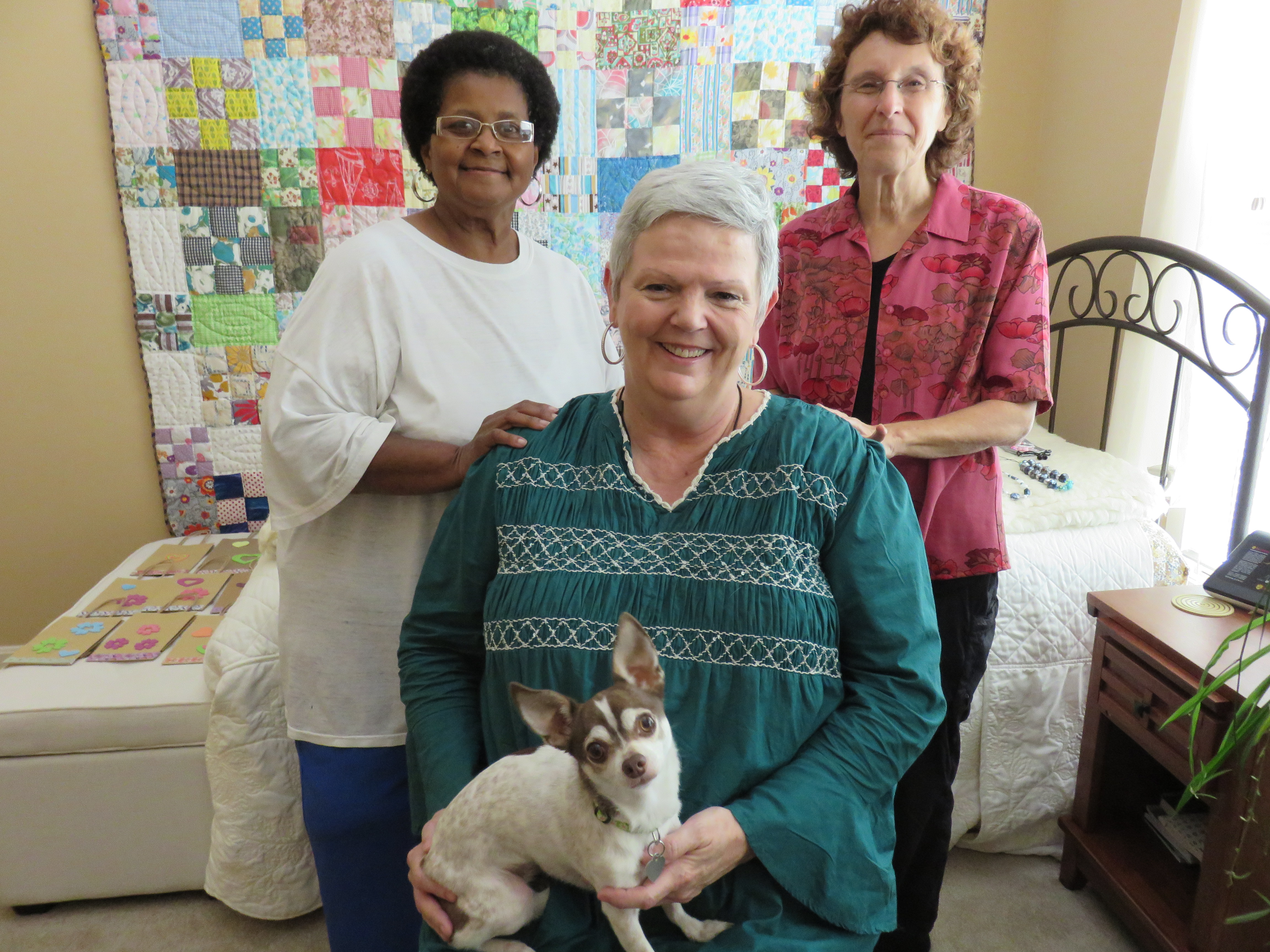
***
Finding ways to give back offers people a sense of purpose and a connection with others. Seek projects that are:
Tangible, finite and easy to finish
Fun to do alone or with others
Aligned with an organization the care partner can relate to
Connected to non-profits that can communicate gratitude
Deborah Shouse is the author of Love in the Land of Dementia: Finding Hope in the Caregiver’s Journey.

